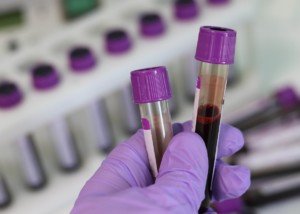Do you know someone whose troponin level in the ER was in the “elevated” or “gray area” range?
This blood test is given to people who complain of chest pain and other symptoms that can come with a heart attack.
Those other symptoms, that make a doctor suspect a possible heart attack, include shortness of breath; pain in the back, jaw and/or arm; vomiting or nausea; and sweating.
Troponin Is a Protein
“Troponin is a component of muscle cells,” says Christopher J. Hanifin, PA-C, who was previously a physician assistant in open heart surgery with Cardiothoracic Surgery of South Bend in South Bend, IN.
“When muscles cells die, they rupture and release troponin into the bloodstream.
“There are different types of troponin, and the troponins contained in heart muscle cells are very specific for cardiac tissue.
“Their appearance in the bloodstream usually indicates damage. Troponins are commonly ordered as part of a test panel called cardiac enzymes.”
This blood test is remarkably sensitive. Even the slightest elevation of this enzyme will be detected.
“Your troponin level is in the gray zone.”
Hanifin explains, “Most commonly, elevated troponins are associated with a heart attack (myocardial infarction).
“Along with a patient’s history, physical examination findings and an electrocardiogram, troponins are essential to making the diagnosis.
“There are other circumstances that can lead to elevated troponins: some cardiac and some non-cardiac.”
These include rapid pulse, chronic/congestive heart failure, pulmonary hypertension, kidney disease and prolonged intense exercise.
“They are often mildly elevated following cardiac procedures like bypass surgery,” says Hanifin.
“Trauma to the heart – such as a contusion caused by striking the steering wheel in a car accident – can cause troponins to elevate.
“They can also elevate in the presence of a pulmonary embolism or pericarditis.”
Those are a blood clot in a lung and inflammation around the heart, respectively.
The so-called gray-zone range of a troponin blood test is not enough, by itself, for a diagnosis of heart attack.
However, a doctor will want the patient admitted if subsequent tests show an upward trend of the numerical result.
The gray-zone for cardiac troponin I is 0.05-0.19 ng/ml.
A nurse, doctor or physician assistant may deliver the result to the patient and the family present, such as, “The troponin is point zero seven, which is abnormal – what we call the gray area – but not quite in the heart attack range.”
Even a gray zone or marginal elevation will concern a doctor. This means something happened in that person’s body that warrants further investigation.
Sometimes the cause seems obvious, such as a young healthy person who was just brought in from a car accident involving chest trauma.
However, the shock of the accident may have triggered a heart attack in the seemingly healthy person.
An elevated result always means at least one more test needs to be done.
It’ll be given several hours later, since the leakage of this protein doesn’t occur immediately after a heart attack.
In fact, the result may be normal in the setting of a heart attack.
A doctor wants to see if there’s an upward trend in the symptomatic patient – a higher-number result – which would mean increasing leakage into the bloodstream.
That mildly elevated or gray-zone area might end up trending into the heart attack range.
Anyone with a result outside the normal range absolutely must remain in the ER for the next test, even if it’s scheduled for five hours later.
Since the tests must be taken several hours apart, the patient will need to be admitted if the number keeps getting higher.
 Christopher J. Hanifin, PA-C, is currently Department Chair and Assistant Professor, Department of Physician Assistant, Seton Hall University, NJ.
Christopher J. Hanifin, PA-C, is currently Department Chair and Assistant Professor, Department of Physician Assistant, Seton Hall University, NJ.
 Lorra Garrick has been covering medical, fitness and cybersecurity topics for many years, having written thousands of articles for print magazines and websites, including as a ghostwriter. She’s also a former ACE-certified personal trainer.
Lorra Garrick has been covering medical, fitness and cybersecurity topics for many years, having written thousands of articles for print magazines and websites, including as a ghostwriter. She’s also a former ACE-certified personal trainer.
.



























